Qu'est-ce que la ténacité ?
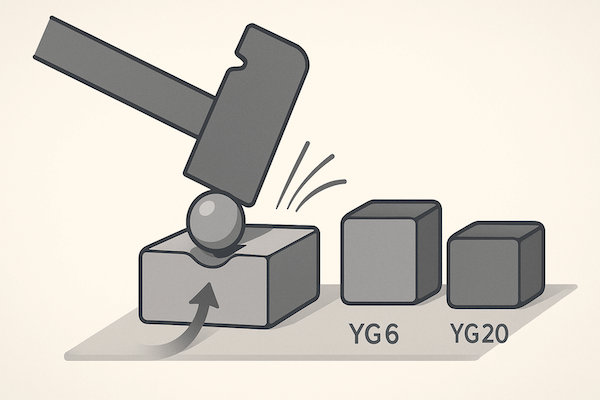
La ténacité est la capacité d'un matériau à absorber l'énergie et à se déformer plastiquement sans se fracturer. Elle reflète la résistance d'un matériau aux impacts, aux chocs et aux ruptures soudaines. Contrairement à dureté, qui résiste à l'indentation de surface, la ténacité traite de la capacité interne du matériau à résister à la propagation des fissures et aux charges soudaines.
En termes simples, un matériau résistant se plie ou se déforme avant de se briser, tandis qu'un matériau cassant se fissure ou se brise.
Dureté et robustesse : un compromis crucial
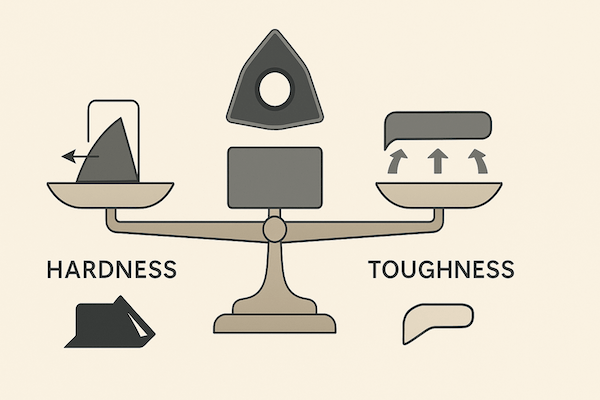
Dans les matériaux techniques, dureté et ténacité sont souvent inversement proportionnelles. Une dureté accrue réduit généralement la ténacité, et inversement. Ce compromis est particulièrement crucial pour les outils en carbure de tungstène, qui doivent trouver un équilibre entre :
Dureté – pour la résistance à l'usure et la coupe de précision
Robustesse – pour l'absorption des chocs, la résistance aux impacts et la durée de vie de l'outil
Par exemple, un outil de coupe en carbure un bord trop dur peut s'écailler facilement lors d'une coupe interrompue, tandis qu'un bord trop dur peut s'user plus rapidement.
Quels sont les facteurs qui influencent la ténacité du carbure de tungstène ?

Le carbure de tungstène (WC) est intrinsèquement dur et cassant, mais lorsqu'il est associé à un liant métallique tel que le cobalt (Co), il devient un carbure cémenté. La ténacité du carbure cémenté dépend de plusieurs facteurs :
1. Liant Contenu
Une teneur plus élevée en cobalt améliore généralement la ténacité, mais réduit la dureté. Par exemple :
Le YG20 (20% Co) a une ténacité élevée, adapté aux outils à impact.
Le YG6 (6% Co) a une dureté élevée, meilleur pour les applications d'usure.
2. Taille des grains
Le WC à grains fins offre une meilleure ténacité que les grains grossiers en raison d'une microstructure plus uniforme et d'une meilleure résistance aux fissures.
3. Additifs
Des inhibiteurs de croissance des grains tels que VC, Cr₃C₂ ou TaC sont ajoutés pour améliorer simultanément la dureté et la ténacité.
4. Frittage Qualité
Porosité Les microfissures dues à un mauvais frittage peuvent réduire considérablement la ténacité. Le carbure haute densité et sans défaut offre une résistance supérieure à la fracture.
Importance de la ténacité dans les applications d'outils en carbure
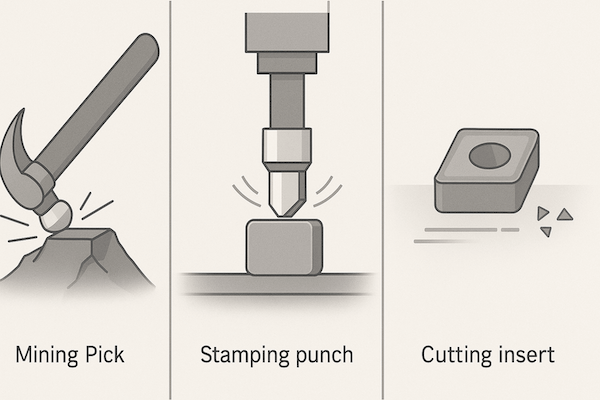
La ténacité joue un rôle essentiel dans les performances des outils, en particulier dans les applications dynamiques ou à fort impact, telles que :
Exploitation minière mèches et outils de forage de tunnels – résistent aux chocs et aux vibrations des roches
Poinçonneuses et outils d'emboutissage : résistent aux chocs mécaniques répétés
Plaquettes de coupe pour la fonte – supporte des charges de coupe intermittentes
Travail du bois et le métal pointes de scie – éviter l'écaillage des bords pendant l'utilisation
Dans ces applications, les outils doivent résister à des environnements soumis à de fortes contraintes sans se casser ni s'écailler, ce qui fait de la ténacité un paramètre de performance clé.
Comment la ténacité est mesurée
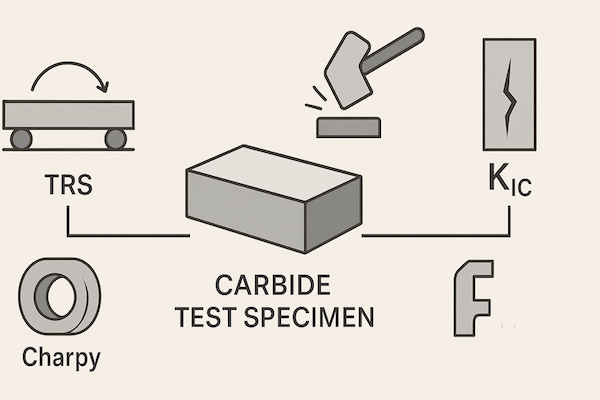
La ténacité n'est pas directement mesurée en unités comme la dureté ou densitéAu lieu de cela, il est évalué à l'aide de tests tels que :
Résistance à la rupture transversale (TRS) – mesure la force qu'un échantillon peut supporter avant de se rompre
Test d'impact Charpy – quantifie l'énergie absorbée lors de l'impact
Ténacité à la rupture (K_IC) – reflète la résistance à la propagation des fissures
Ces valeurs aident fabricants de carbure des nuances de conception adaptées à des exigences spécifiques.
Équilibrer robustesse et performance
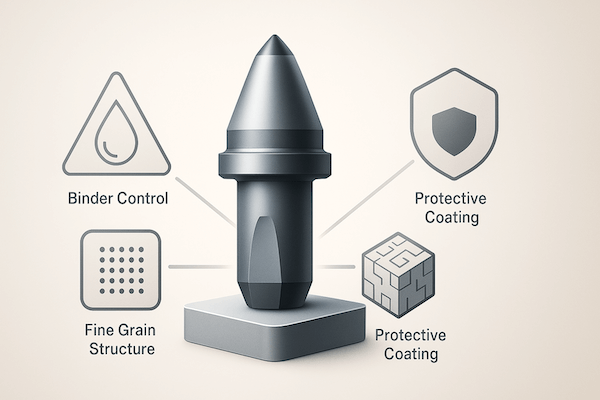
Les concepteurs d'outils et les fabricants de carbure doivent soigneusement adapter la robustesse d'un outil à son utilisation prévue. Une conception trop axée sur la robustesse peut entraîner une usure excessive, tandis qu'une conception insuffisante peut entraîner une défaillance prématurée. La technologie moderne du carbure se concentre sur :
Microstructure contrôle
Liant optimisation de phase
Revêtements avancés pour entretenir résistance à l'usure tout en s'appuyant sur la ténacité du noyau
Conclusion
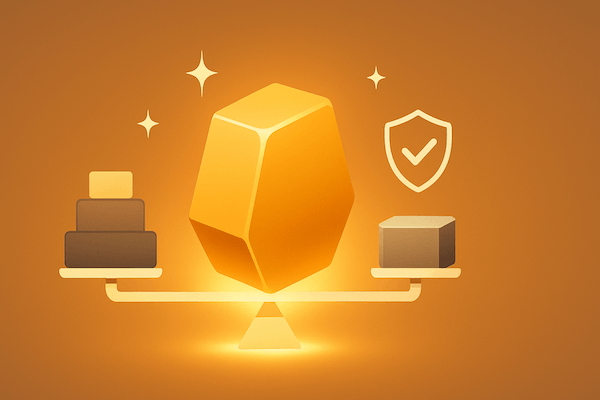
La ténacité est une propriété fondamentale qui définit la durabilité et la fiabilité d'un outils en carbure de tungstène. En particulier dans les environnements à forts impacts ou à charges cycliques, le choix d'une nuance présentant une ténacité optimale garantit une durée de vie prolongée de l'outil, des taux de défaillance réduits et une meilleure efficacité globale. Comprendre l'interaction entre la ténacité et la teneur en liant granulométrie, et les exigences des applications sont essentielles au développement de solutions en carbure cémenté hautes performances.
